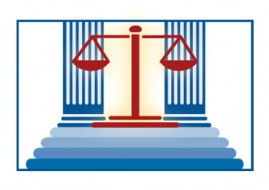Review of Recent Malpractice Issues
By Steven Wechsler [Originally published in NYPRR November 2001]
[Editor’s note: Professor Wechsler is currently preparing a review of recent developments in Professional Responsibility, to be published in the 2000–01 Survey of New York Law in the Syracuse Law Review. Portions of that survey will be published from time to time by NYPRR. This portion deals with recent cases and ethics opinions on malpractice.]
Lawyer’s Duty to Inform Client of Own Malpractice
The natural, human instinct of a lawyer who makes a serious mistake in her representation of a client is to hide that embarrassing fact, while valiantly trying to correct the problem. New York State Bar Association Opinion 734 reminds New York attorneys that this is not an acceptable option. Instead, an attorney who has made a serious error that may give rise to a malpractice claim is under a duty to report that fact to the client. The Opinion was issued in the connection with a representation by a Legal Aid Society, which is treated like any other law office for ethical purposes; the Opinion reiterates the position taken by the NYSBA earlier that serious errors must be promptly reported to the client. [See, NYSBA Op. 275 (1972); NYSBA Op. 295 (1973); Matter of Tallon, 447 NYS2d 50 (3rd Dept. 1982); Circle Chevrolet Comp. v. Giordano, Halleran & Ciesla, 662 A.2d 509 (N.J. 1995).]
After the client is fully informed of the situation, the attorney must next consider whether DR 5-101(A) requires her to withdraw from the representation. If the lawyer’s personal interest in avoiding liability may reasonably affect her independent professional judgment on behalf of the client, continued representation is permissible only with client consent after full disclosure and only if a disinterested lawyer would believe that the representation will not be adversely affected. In any event, lawyers who find themselves in this situation should also be mindful of DR 6-102(A), requiring that the client be advised to seek independent representation before settling a claim for malpractice.
Liability and Damage Issues
Two Court of Appeals cases and two First Department cases explore the parameters of a lawyer’s professional duty to clients and non-clients, as well as the measure of damages in malpractice cases. In Darby & Darby v. VSI International, Inc. [95 NY2d 308 (2000)], a New York law firm was engaged to defend a corporate client in a Florida patent infringement lawsuit. Subsequently, the law firm, having withdrawn from the representation, sued to collect its attorneys’ fees and the client asserted a malpractice counterclaim. The counterclaim was based on the failure of the law firm to advise the client of the possibility that the client’s general liability insurance policy might cover its litigation expenses, a possibility based on a theory of liability that the Court characterized as “novel” and “largely undeveloped” at the time of the firm’s representation. [95 NY2d 308 at 312, 314.] Citing EC 6-2, the Court agreed with the proposition that “attorneys should familiarize themselves with current legal developments” [Id. at 314] and that it is malpractice to fail to exercise ordinary and reasonable skill and knowledge during the representation of a client. That said, there is no malpractice liability for failing to inform a client of a “novel and questionable theory” [Id. at 314] that was not recognized by the courts in either New York or Florida at the time of the representation.
In Arnav Industries, Inc. Retirement Trust v. Brown, Raysman, Millstein, Felder & Steiner [96 NY2d 300 (2001)], the Court of Appeals considered a case in which plaintiff’s law firm sent plaintiff a revised stipulation of settlement without catching an error which allegedly cost plaintiff about $4 million. The plaintiff did not read the stipulation before signing it, relying instead on the lawyers’ representations that it was correct. Although it is true that a party is generally bound by its execution of an agreement even when it has not read it [citing, Gillman v. Chase Manhattan Bank, 73 NY2d 1; Pimpinello v. Swift & Co., 253 NY 159; Metzger v. Aetna Ins. Co., 227 NY 411], the rule applies only as between the parties to the agreement; a client is not barred by its signature on a settlement stipulation when it alleges an error by its attorney in the preparation of the stipulation. Plaintiff has therefore stated a cause of action in malpractice sufficient to survive a motion to dismiss.
Although malpractice claims are generally brought by clients against their own lawyers, the courts have permitted the non-client adversary in some circumstances to state a claim directly against the lawyers on the other side. In Mayes v. UVI Holdings, Inc. [723 NYS2d 151 (1st Dept. 2001)], landlord’s attorney caused the Marshal to evict plaintiff tenant on a void warrant. Citing EC 7-7, and recalling that “conduct of litigation is the prerogative of counsel” [Id. at 154-155], the First Department held that the tenant had a direct claim against the law firm for “improper exercise of authority” [quoting, Singer v. Whitman & Ransom, 83 A.D.2d 862]. (However, the court dismissed the malpractice claim as redundant to a statutory treble-damage claim under RPAPL §853.)
In another eviction case, Wolkstein v. Morgenstern [275 A.D.2d 635 (1st Dept. 2000)], the defendant lawyer allegedly failed to have the proceedings against his tenant client discontinued or dismissed and thereafter failed to advise the client of the posture of her case. As a result, plaintiff was evicted from her premises in the middle of the winter “more than one year after [her own lawyer] advised her that the proceeding had been settled in her favor.” [Id. at 636] The court characterized the effects of the attorney’s malpractice as “drastic and … alarming,” [Id at 637] but concluded that plaintiff’s claim for negligent infliction of emotional distress must fail. In the absence of unreasonable and direct endangerment of the plaintiff’s physical safety, plaintiff was limited to her malpractice claim and would be permitted to recover only her pecuniary loss. A claim for legal malpractice does not encompass a claim for emotional or psychological injury [citing Dirito v. Stanley, 203 A.D.2d 903].
Statute of Limitations Issues
Two cases in the Court of Appeals and one in Supreme Court addressed various statute of limitations issues in connection with legal malpractice claims. In Shumsky v. Eisenstein [96 NY2d 164 (2001)], the defendant attorney failed to begin a lawsuit on his clients’ contract claim before the statute of limitations had run and then avoided their inquiries about the matter. These acts occurred in March 1994 and the plaintiff-clients commenced their action against the attorney in December 1997. The defendant sought summary judgment on the ground that the three-year statute of limitations barred the malpractice action. In reversing the Appellate Division, which had dismissed the complaint, the Court relied on the continuous representation doctrine. This doctrine tolls the statute of limitations “until the ongoing representation is completed.” [Id 167–168, quoting Glamm v. Allen, 57 NY2d 87, 94 (1982).] The continuous representation doctrine recognizes that it is unreasonable to insist that a client sue her lawyer for malpractice in a particular matter while still receiving legal services in that matter. (The doctrine applies also to claims of medical malpractice.) The doctrine applies only when the “continuing representation pertains specifically to the matter in which the attorney committed the alleged malpractice.” [Id 168.] The Court distinguished Shumsky from prior cases in which the malpractice plaintiffs had missed the statute of limitations but were unaware of the need for further legal services. The plaintiffs in Shumsky not only understood that they required further legal services in the matter underlying their malpractice claim, but were given the false impression that their lawyer was working on their case. Attorneys should note that the tolling produced by the continuous representation doctrine would end when the client is properly notified of the termination of the representation. This may well occur only when the lawyer herself carries out the painful duty of informing the client of her own malpractice.
Statute in Criminal Actions
In Britt v. Legal Aid Society, Inc., [718 NYS2d 264 (2000)] the Court of Appeals focused on the question: When does a cause of action for legal malpractice accrue in criminal defense representation? Generally speaking, a legal malpractice action accrues when the malpractice occurs [the Court cited Glamm v. Allen, 57 NYS 2d 87 (1982), supra]. However, a criminal defendant who would assert a claim of legal malpractice must first establish either his own innocence or a colorable claim of innocence [citing, Carmel v. Lunney, 518 NYS2d 605]. To do that, he must free himself of the criminal conviction. Thus, the limitations period does not accrue until the criminal proceeding is fully terminated without a conviction. In Britt, defendant/plaintiff was not required to begin his malpractice action until the end of a limitations period that began only when the indictment against him was dismissed. The Court cited the importance of the policy against having “two conflicting determinations as to the same transaction” [quoting, Smith Hunter v. Harvey, 95 NY2d 191, 197].
Finally, in Elitzer v. Shlesinger, Arkwright & Garvey (Sup. Ct., Albany Cty.) the court was confronted with the question: Which statute applies to a claim for legal malpractice — the three-year tort statute or the six-year period applicable to actions for breach of contract? In Elitzer, the defendant law firm had agreed to research the registrability of certain marks; this required the performance of specific searches. When the defendant has undertaken to do some specific act for plaintiff, plaintiff may assert a cause of action in contract. Under the reasoning of Santulli v. Englert, Reilly & McHugh [78 NY2d 700 (1992)], plaintiff has brought itself under the longer statute of limitations governing actions on contract. Santulli holds that it’s not necessary that the lawyer make an express promise to obtain a specific result to enable the client plaintiff to sue for breach of contract; it’s enough that the lawyer commit to perform a specific act which involves more than her general obligation to provide legal services in a non- negligent manner.
Steven Wechsler is professor of law at Syracuse University College of Law. He teaches Contracts, Professional Responsibility and Negotiation.
DISCLAIMER: This article provides general coverage of its subject area and is presented to the reader for informational purposes only with the understanding that the laws governing legal ethics and professional responsibility are always changing. The information in this article is not a substitute for legal advice and may not be suitable in a particular situation. Consult your attorney for legal advice. New York Legal Ethics Reporter provides this article with the understanding that neither New York Legal Ethics Reporter LLC, nor Frankfurt Kurnit Klein & Selz, nor Hofstra University, nor their representatives, nor any of the authors are engaged herein in rendering legal advice. New York Legal Ethics Reporter LLC, Frankfurt Kurnit Klein & Selz, Hofstra University, their representatives, and the authors shall not be liable for any damages resulting from any error, inaccuracy, or omission.
Related Posts
« Durable Powers and Client’s Incapacity Attorney Sanctioned Twice in Same Action »













